Applying to art school can feel like stepping into the unknown. It’s not just about good grades; it’s about showcasing your unique creative voice. And the key to unlocking that door is a compelling art portfolio. More than just a collection of your best pieces, it’s a carefully curated narrative that demonstrates your skills, passion, and potential.
Think of your art portfolio as your personal brand ambassador. It speaks for you, even when you’re not in the room. Many talented artists miss out on opportunities because their portfolios fail to capture the essence of their artistic capabilities. This article serves as a guide to building an art portfolio that not only meets the expectations of art schools but also sets you apart from the competition. By understanding what art schools are looking for and following a strategic approach, you can craft a portfolio that showcases your strengths and secures your place in your dream program.
Portfolio Development for Art School Success
What is an Art Portfolio?
An art portfolio is a collection of your artistic work, carefully selected and presented to demonstrate your skills, creativity, and potential to art schools or prospective employers. It’s more than just a scrapbook; it’s a visual resume that highlights your artistic journey and capabilities. It shows your personality, style, and ideas.
It’s a tool that can help you to:
- Showcase your skills: Your portfolio is a direct display of your skills in various mediums, techniques, and artistic styles.
- Demonstrate your creativity: It shows the panel your original ideas, innovative approaches, and unique artistic vision.
- Highlight your artistic growth: It maps the evolution of your skills and artistic style over time.
- Communicate your artistic voice: It helps you define and communicate the essence of your artistic personality.
Why is an Art Portfolio Important for Art School Admissions?
Art schools place significant importance on portfolios because they offer a tangible assessment of an applicant’s artistic abilities. Unlike academic transcripts, which measure intellectual capabilities, a portfolio demonstrates your actual skill. Here’s why art portfolios are so important:
- Demonstrates Artistic Potential: Art schools seek students with potential for growth and innovation. A well-crafted portfolio showcases not only your current abilities but also your capacity to develop and refine your skills.
- Provides Evidence of Technical Skills: Art schools want to ensure applicants have a grasp on the fundamentals. A portfolio provides visual proof of your proficiency in drawing, painting, sculpture, and other relevant techniques.
- Highlights Creativity and Originality: Art schools prize students who can think outside the box. A compelling portfolio displays your creative process, unique ideas, and innovative approaches to artistic problem-solving.
- Indicates Commitment to Art: Art schools are looking for students who are passionate about their craft. A thoughtfully assembled portfolio demonstrates your dedication, perseverance, and willingness to invest time and effort into your artistic pursuits.
Understanding Art School Expectations
Before diving into the process of creating your art portfolio, it’s essential to understand what art schools are generally looking for in their applicants. While each school has its specific requirements, these are some common expectations:
- Technical Proficiency: Demonstrate a solid understanding of fundamental artistic techniques, such as drawing, painting, sculpting, and design principles.
- Creativity and Originality: Showcase your unique artistic vision, innovative ideas, and ability to think outside the box.
- Conceptual Development: Display the ability to develop and execute artistic concepts effectively, from initial sketches to final pieces.
- Variety and Range: Include a diverse range of artwork that demonstrates your versatility in different mediums, styles, and subject matters.
- Cohesion and Narrative: Present your work in a cohesive manner, with a clear artistic voice and a compelling narrative that ties the pieces together.
- Attention to Detail: Pay meticulous attention to detail in both the creation and presentation of your artwork, demonstrating your commitment to excellence.
Planning Your Art Portfolio
Portfolio planning is just as important as the artwork itself. A well-structured portfolio shows deliberation and intent, impressing the review committee. These are the key planning stages:
- Define Your Artistic Identity: Start by identifying your strengths, interests, and unique artistic voice. What mediums do you enjoy working with? What themes or subjects resonate with you? Understanding your artistic identity will help you curate a portfolio that reflects your authentic self.
- Research School Requirements: Carefully review the specific requirements and guidelines of each art school you’re applying to. Pay attention to the number of pieces required, the types of artwork preferred, and any specific prompts or themes.
- Assess Your Existing Work: Take inventory of your existing artwork and identify the pieces that best showcase your skills, creativity, and artistic vision. Be selective and only include your strongest work.
- Identify Gaps and Weaknesses: Evaluate your portfolio for any gaps or weaknesses in terms of technical skills, variety, or conceptual development. Identify areas where you can improve or create new work to strengthen your portfolio.
- Set Goals and Timelines: Establish clear goals for your portfolio, such as improving specific skills, creating new artwork, or refining your presentation. Set realistic timelines for each goal and track your progress along the way.
Selecting the Right Pieces
The pieces you choose to include in your art portfolio are the building blocks of your success. Each piece should serve a purpose and contribute to the overall narrative of your artistic journey. Follow these tips to select the right pieces:
- Showcase Your Best Work: Only include your strongest and most compelling artwork in your portfolio. Avoid including pieces that are mediocre or poorly executed, as they can detract from the overall impression.
- Demonstrate Technical Skill: Choose pieces that showcase your technical skills in various mediums and techniques, such as drawing, painting, sculpture, and digital art.
- Highlight Creativity and Originality: Include artwork that demonstrates your unique artistic vision, innovative ideas, and ability to think outside the box.
- Present a Variety of Styles and Subjects: Showcase a diverse range of artwork that reflects your versatility and range as an artist.
- Tell a Story: Arrange your artwork in a logical sequence that tells a story about your artistic journey, growth, and development.
- Seek Feedback: Get feedback from teachers, mentors, and peers to help you identify your strongest pieces and make informed decisions about what to include in your portfolio.
Creating New Artwork for Your Portfolio
Sometimes, your existing artwork may not be enough to fully showcase your skills and potential. In such cases, it may be necessary to create new artwork specifically for your portfolio. Follow these tips to create compelling new pieces:
- Address Gaps and Weaknesses: Focus on creating artwork that addresses any gaps or weaknesses in your existing portfolio, such as demonstrating specific technical skills or exploring new mediums or styles.
- Experiment with New Techniques: Challenge yourself to experiment with new techniques and approaches to art-making. This can help you expand your skills, discover new creative avenues, and create unique and innovative artwork.
- Explore Personal Themes: Draw inspiration from your personal experiences, interests, and passions to create artwork that is meaningful and authentic.
- Respond to Prompts: If the art schools you’re applying to provide specific prompts or themes, respond to them in a thoughtful and creative manner. This can demonstrate your ability to follow instructions and develop original ideas within a given framework.
- Seek Inspiration: Look for inspiration in art museums, galleries, books, and online resources. Study the work of artists you admire and try to incorporate elements of their style into your own artwork.
Digital vs. Physical Portfolios
Today, both digital and physical portfolios are commonly used for art school applications. Each format has its pros and cons, and the choice depends on your preferences, the school’s requirements, and the type of artwork you’re showcasing.
Digital Portfolios
Pros:
- Accessibility: Digital portfolios can be easily accessed and shared online, making them ideal for remote submissions and virtual interviews.
- Versatility: Digital portfolios can showcase a wide range of media, including images, videos, animations, and interactive projects.
- Cost-Effectiveness: Digital portfolios eliminate the need for printing, shipping, and other physical materials, saving you time and money.
- Flexibility: Digital portfolios can be easily updated and modified to reflect your latest artwork and achievements.
Cons:
- Technical Issues: Digital portfolios rely on technology, which can be subject to glitches, compatibility issues, and other technical problems.
- Screen Limitations: Digital screens may not accurately represent the colors, textures, and details of your artwork, potentially affecting the overall impression.
- Presentation Challenges: Presenting your artwork effectively in a digital format requires careful attention to design, layout, and user experience.
Physical Portfolios
Pros:
- Tangible Experience: Physical portfolios offer a tactile and immersive experience that allows viewers to appreciate the details, textures, and scale of your artwork.
- Personal Touch: Physical portfolios allow you to showcase your personality and craftsmanship through the selection of materials, binding techniques, and overall presentation.
- Direct Interaction: Physical portfolios facilitate direct interaction with reviewers, allowing you to engage in meaningful conversations and answer questions about your work.
Cons:
- Limited Accessibility: Physical portfolios are less accessible than digital portfolios, requiring physical transportation and in-person presentations.
- Cost and Effort: Physical portfolios can be expensive to produce, requiring printing, framing, and other physical materials.
- Portability Issues: Physical portfolios can be bulky and difficult to transport, especially for large or delicate artwork.
- Durability Concerns: Physical portfolios are susceptible to damage from handling, shipping, and storage, requiring careful protection and maintenance.
Assembling Your Digital Art Portfolio
Creating a compelling digital art portfolio requires careful planning, attention to detail, and a keen eye for design. These steps can help you to get it done effectively:
- Choose a Platform: Select a platform that aligns with your needs and preferences, such as a personal website, online portfolio service, or social media platform.
- Design Your Layout: Create a visually appealing layout that showcases your artwork effectively. Use a clean and uncluttered design with clear navigation and consistent branding.
- Optimize Images: Optimize your images for web viewing by resizing them to appropriate dimensions and compressing them to reduce file size. This will ensure that your portfolio loads quickly and looks sharp on all devices.
- Write Compelling Descriptions: Write detailed and engaging descriptions for each piece of artwork, providing context, inspiration, and technical information. Use keywords to improve search engine visibility and attract potential viewers.
- Organize Your Work: Arrange your artwork in a logical sequence that tells a story about your artistic journey, growth, and development. Consider grouping your work by theme, medium, or style to create a cohesive narrative.
- Add Contact Information: Include your contact information on your portfolio website or profile, making it easy for art schools and potential employers to reach you.
- Test and Refine: Thoroughly test your digital portfolio on different devices and browsers to ensure that it looks and functions properly. Get feedback from teachers, mentors, and peers, and make any necessary refinements based on their suggestions.
Assembling Your Physical Art Portfolio
Constructing a compelling physical art portfolio demands deliberation, skill, and attention to detail. It should be as impressive as the art it carries. Follow these tips to assemble a portfolio that makes a statement:
- Select a Portfolio Case: Choose a portfolio case that is durable, professional-looking, and appropriately sized for your artwork. Opt for a case that protects your work from damage and allows for easy transportation.
- Choose Presentation Materials: Select high-quality presentation materials, such as acid-free paper, archival sleeves, and mounting boards, to showcase your artwork in the best possible light.
- Mount and Arrange Your Work: Carefully mount and arrange your artwork within the portfolio case, paying attention to spacing, alignment, and visual balance. Use archival tape or adhesive to secure your work in place.
- Include a Statement of Purpose: Write a brief statement of purpose that introduces yourself, explains your artistic vision, and outlines the goals of your portfolio. This statement can provide valuable context for reviewers and help them understand your work on a deeper level.
- Label Your Work: Label each piece of artwork with its title, medium, dimensions, and date of creation. This will provide reviewers with essential information and demonstrate your attention to detail.
- Practice Your Presentation: Practice presenting your physical portfolio to teachers, mentors, and peers to refine your delivery and receive valuable feedback. Be prepared to discuss your work in detail and answer any questions that arise.
Writing a Compelling Artist Statement
An artist statement is a written description of your work that provides context, inspiration, and insight. It’s an opportunity to communicate your artistic vision and engage viewers on a deeper level. Follow these tips to write a compelling artist statement:
- Introduce Yourself: Start by briefly introducing yourself as an artist and outlining your background, education, and experience.
- Describe Your Work: Provide a clear and concise description of your artwork, focusing on its themes, concepts, and techniques.
- Explain Your Inspiration: Discuss the sources of inspiration that drive your artistic process, such as personal experiences, cultural influences, or artistic movements.
- Outline Your Artistic Vision: Articulate your artistic vision and the goals you hope to achieve through your work. What messages do you want to convey? What emotions do you want to evoke?
- Discuss Your Process: Describe your creative process, including the materials you use, the techniques you employ, and the challenges you overcome.
- Keep it Concise: Aim for a statement that is concise, focused, and easy to understand. Avoid jargon and overly academic language, and focus on communicating your ideas in a clear and engaging manner.
- Revise and Refine: Revise and refine your artist statement multiple times, seeking feedback from teachers, mentors, and peers. Ensure that your statement accurately reflects your artistic vision and effectively communicates your ideas to viewers.
Documenting Your Artwork Professionally
Professional documentation is essential for showcasing your artwork in the best possible light, whether you’re creating a digital portfolio, applying to art schools, or exhibiting your work in galleries. Follow these steps to document your artwork professionally:
- Use High-Quality Equipment: Invest in a good-quality camera, tripod, and lighting equipment to ensure that your artwork is captured accurately and effectively.
- Set Up Your Studio: Create a dedicated studio space with neutral backgrounds, soft lighting, and minimal distractions. This will help you achieve consistent and professional-looking results.
- Control Lighting: Pay careful attention to lighting when photographing your artwork. Use soft, diffused lighting to minimize glare, shadows, and hot spots.
- Calibrate Your Camera: Calibrate your camera to ensure that colors are reproduced accurately and consistently. Use a color checker or gray card to adjust your camera settings and achieve optimal results.
- Edit Your Images: Use photo editing software to adjust brightness, contrast, color balance, and sharpness. Be careful not to over-edit your images, as this can distort the colors and textures of your artwork.
- Save Your Files: Save your images in a high-resolution format, such as JPEG or TIFF, to ensure that they look sharp and detailed when displayed online or printed.
- Label Your Files: Label your image files with descriptive names that include the title of the artwork, the medium used, and the date of creation. This will help you stay organized and make it easier to find your images in the future.
Portfolio Presentation Tips
The presentation of your art portfolio is just as important as the artwork itself. A well-presented portfolio demonstrates your attention to detail, professionalism, and commitment to excellence. Follow these tips to create a presentation that impresses reviewers:
- Start Strong: Begin your portfolio with your strongest and most compelling pieces to capture the viewer’s attention from the start.
- Create a Narrative: Arrange your artwork in a logical sequence that tells a story about your artistic journey, growth, and development.
- Showcase Variety: Include a diverse range of artwork that reflects your versatility and range as an artist.
- Maintain Consistency: Use consistent design elements, such as fonts, colors, and layouts, to create a cohesive and professional-looking portfolio.
- Provide Context: Include captions, descriptions, and artist statements to provide context and insight into your artwork.
- Practice Your Delivery: Practice presenting your portfolio to teachers, mentors, and peers to refine your delivery and receive valuable feedback.
- Be Prepared to Answer Questions: Be prepared to discuss your artwork in detail and answer any questions that arise.
Common Art Portfolio Mistakes to Avoid
Even the most talented artists can make mistakes when putting together their art portfolios. Learning and avoiding common pitfalls will give you an edge in the highly competitive art school application process. These are the mistakes you should avoid:
- Including Too Many Pieces: Overloading your portfolio with too many pieces can dilute the overall impact and make it difficult for reviewers to appreciate your strongest work.
- Including Weak or Mediocre Work: Including weak or mediocre artwork can detract from the overall impression and make it seem like you lack discernment.
- Failing to Follow Instructions: Failing to follow the specific requirements and guidelines of each art school can result in your portfolio being rejected outright.
- Poor Presentation: A poorly presented portfolio, with cluttered layouts, low-quality images, and grammatical errors, can undermine the credibility of your work.
- Lack of Variety: A portfolio that lacks variety can suggest that you’re limited in your skills and unable to explore different mediums, styles, and subjects.
- Inconsistent Artistic Voice: A portfolio that lacks a cohesive artistic voice can make it difficult for reviewers to understand your vision and identity as an artist.
- Neglecting Technical Skills: A portfolio that neglects technical skills can suggest that you lack a solid foundation in art-making and may struggle to succeed in art school.
Seeking Feedback and Critique
Feedback and critique are invaluable tools for improving your art portfolio and maximizing your chances of success. Seek feedback from a variety of sources, including teachers, mentors, peers, and professional artists, to gain different perspectives and insights.
- Identify Areas for Improvement: Use feedback to identify areas where you can improve your artwork, presentation, and overall portfolio strategy.
- Refine Your Vision: Use feedback to refine your artistic vision and identity, ensuring that your portfolio accurately reflects your strengths, interests, and goals.
- Address Weaknesses: Use feedback to address any weaknesses in your portfolio, such as technical skills, variety, or conceptual development.
- Gain Confidence: Use positive feedback to gain confidence in your abilities and validate your artistic choices.
- Prepare for Interviews: Use feedback to prepare for interviews and portfolio reviews, anticipating potential questions and developing thoughtful responses.
Finalizing and Submitting Your Portfolio
Before submitting your art portfolio, take the time to finalize and polish every aspect of your presentation. This includes reviewing your artwork, refining your descriptions, and ensuring that everything is organized and error-free.
- Double-Check Requirements: Double-check that you have met all of the specific requirements and guidelines of each art school you’re applying to.
- Proofread Your Materials: Proofread your artist statement, descriptions, and captions to ensure that they are free of grammatical errors and typos.
- Organize Your Files: Organize your digital files in a logical and consistent manner, using descriptive names and clear folder structures.
- Test Your Links: Test all of the links in your digital portfolio to ensure that they are working properly and leading to the correct destinations.
- Submit on Time: Submit your portfolio well before the deadline to avoid any last-minute technical issues or complications.
What Happens After You Submit Your Portfolio?
After submitting your art portfolio, the waiting game begins. Art schools typically take several weeks or months to review applications and make admissions decisions. During this time, it’s important to be patient and focus on other aspects of your application, such as writing essays and preparing for interviews.
- Await Notification: Await notification from the art schools you applied to. This may come in the form of an email, a letter, or a phone call.
- Prepare for Interviews: If you’re invited to interview, prepare by reviewing your portfolio, researching the school, and practicing your responses to common interview questions.
- Evaluate Offers: If you receive acceptance offers, evaluate them carefully based on factors such as tuition costs, program offerings, campus culture, and career opportunities.
- Make Your Decision: Once you have evaluated all of your offers, make your decision and notify the art school of your choice.
Alternative Paths if Art School Isn’t in the Cards
Art school isn’t the only path to a successful career in the arts. If you’re not accepted to art school or decide that it’s not the right fit for you, there are many alternative paths you can pursue to develop your skills, build your portfolio, and achieve your artistic goals.
- Online Courses: Enroll in online courses offered by reputable art schools, universities, and online learning platforms. These courses can provide you with valuable instruction, feedback, and mentorship, allowing you to develop your skills and expand your knowledge.
- Workshops and Residencies: Attend workshops and residencies offered by art centers, galleries, and artist collectives. These immersive experiences can provide you with hands-on training, networking opportunities, and exposure to new ideas and techniques.
- Self-Study: Dedicate time to self-study and experimentation, exploring different mediums, styles, and subjects on your own. Use books, tutorials, and online resources to guide your learning and track your progress.
- Community Engagement: Get involved in your local art community by volunteering at art centers, attending exhibitions, and participating in group shows. This can help you build connections, gain exposure, and develop your professional skills.
- Freelance Opportunities: Seek out freelance opportunities in fields such as graphic design, illustration, and photography. These opportunities can provide you with valuable experience, build your portfolio, and help you earn income while pursuing your artistic goals.
Should You Get Into Art School?
An art portfolio is your ticket to a world of creativity and learning. Take the time to craft an art portfolio that genuinely represents your artistic skills. With dedication, planning, and a dash of creativity, you can create a portfolio that opens doors to your future as an artist.
The decision of whether or not to attend art school is a personal one that depends on your individual goals, circumstances, and aspirations. Weigh the pros and cons carefully, considering factors such as your financial resources, career goals, and learning style. If you’re passionate about art, committed to your craft, and eager to learn from experienced professionals, art school can be a transformative experience that sets you on the path to success. However, if art school isn’t the right fit for you, there are many alternative paths you can pursue to develop your skills, build your portfolio, and achieve your artistic goals. The most important thing is to stay true to yourself, follow your passions, and never stop creating.


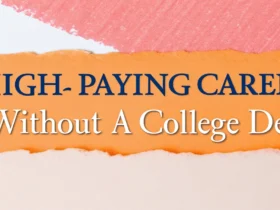

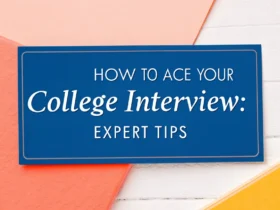
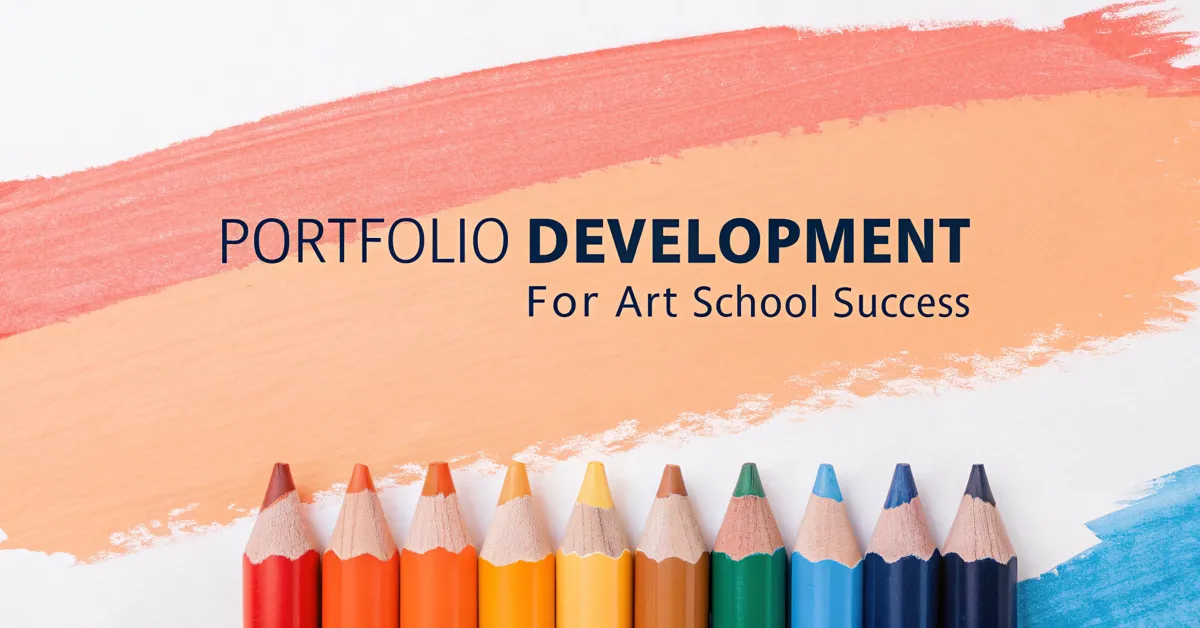
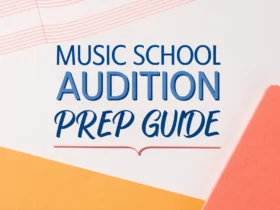






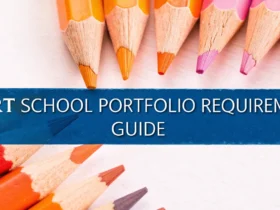

Leave a Reply
View Comments